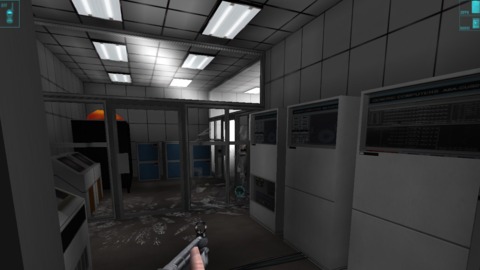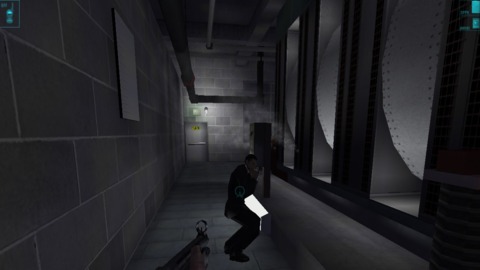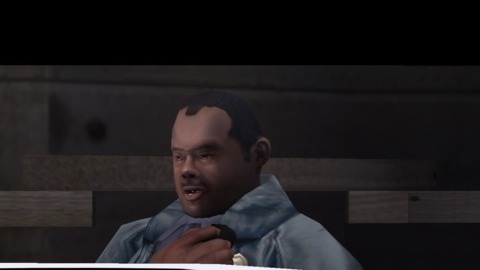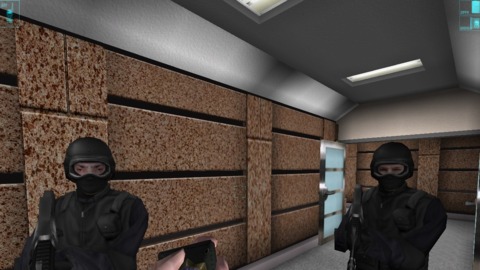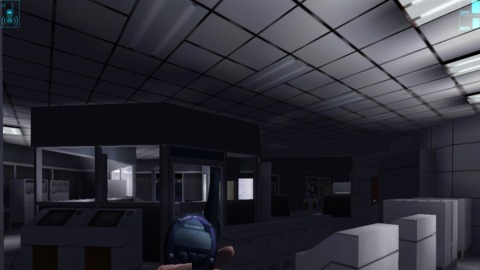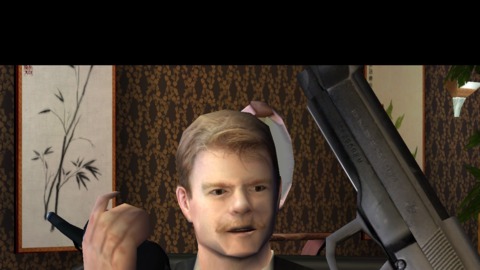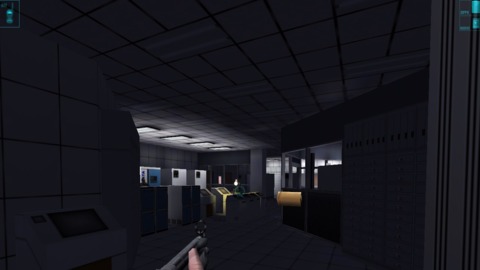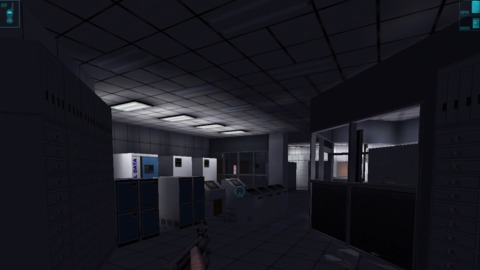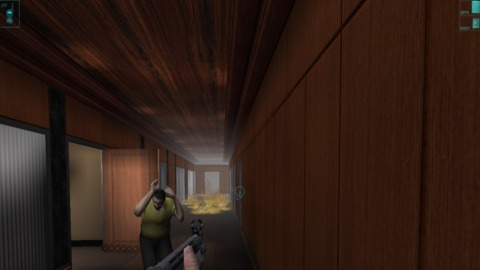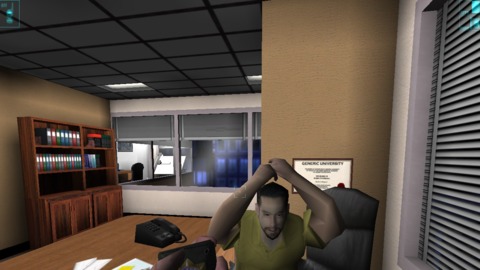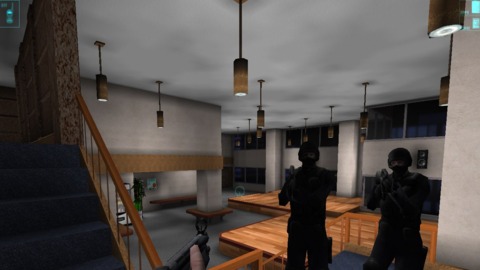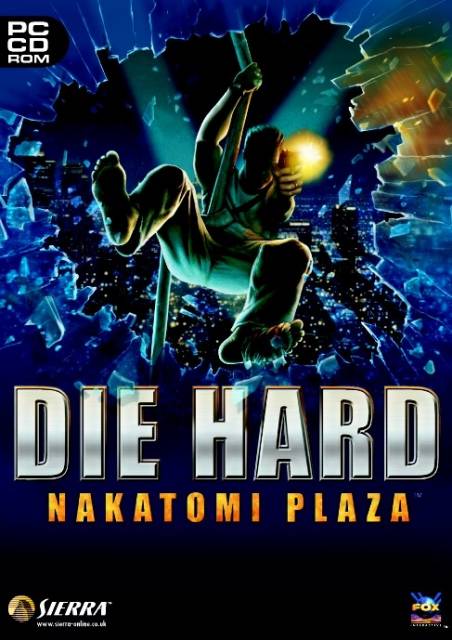Overview
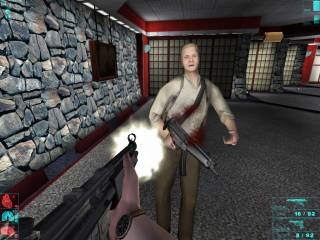
Originally conceived as a total conversion for Duke Nukem 3D, Die Hard: Nakatomi Plaza lets the player revisit the events of the film Die Hard as off-duty cop John McClane. It shares some obvious similarities with previous Die Hard games for the PC and NES, but unlike previous titles, uses scripting and cutscenes to retell nearly all of the film's story and memorable moments. Additionally, new scenes (such as a bomb defusal sequence, and rescuing a trapped employee from a fire) have been added to suggest what John was up to during the scenes when he was off-camera in the film.
Plot
Christmas, 1988. New York City cop John McClane is visiting his estranged wife in Los Angeles. He meets her at her office Christmas party, held inside the 38-story Nakatomi Plaza corporate headquarters. Unfortunately, a series of European terrorists headed by mastermind Hans Gruber choose this night to storm the building and hold the party-goers hostage. John escapes the initial chaos with his service pistol, and proceeds to wage a one-man guerilla war on their captors.
Gameplay
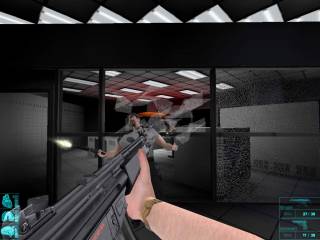
Die Hard: Nakatomi Plaza plays like a standard first-person-shooter. The film's twelve elite criminals have been replaced with hundreds of carbon-copy goons. The player collects ammo and new weapons off defeated foes, and restores health through first-aid kits mounted throughout the levels. Levels are constructed in a very linear fashion, and the player is shuttled up and down the skyscraper as the plot dictates. The player will never leave the confines of Nakatomi Plaza (appropriate to the story), but will literally explore the building from top to bottom - from rooftop to sewer tunnels underneath, and through lobbies, executive levels, levels under construction, and familiar sets from the movie along the way. The game features 30 levels in all.
The player's status is tracked by three separate meters - Health, Stamina, and Morale. Health decreases significantly when shot, encouraging "realistic" gun battles and the tenacious use of cover. Players are able to lean out from cover and shoot, helping somewhat to conserve health. Stamina drains when the player runs, and recharges when standing still. This is most apparent in timed sequences (such as the bomb defusal scene), where limited stamina means the player must run in bursts, while pressing the remaining time down to the wire.
Morale is meant to affect enemy artificial intelligence. Morale is raised by accurate shots and decreased by taking hits. High morale means John is confident, and enemies will be less effective. Low morale puts enemies on the offensive, making them more aggressive and accurate, and forcing the player into cover. However, reviewers have noted that Morale's actual effect in the final version is dubious. Three difficulty levels are also available, named after the movies in the series ("Die Hard" (easiest), "Die Harder," and "Die Hard With A Vengeance" (hardest). These are supposed to have a similar effect on enemy A.I., but appear to primarily affect bullet damage and enemy resistance.
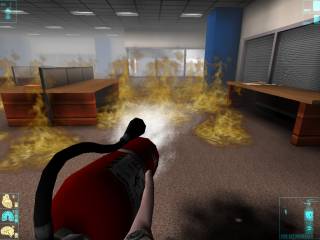
Players can carry only one primary and one secondary weapon. The secondary weapon is always John's pistol, but it can be swapped with items like wire cutters and flashbangs. There are only four possible primary weapons - an MP5 submachine gun, a sniper rifle, an M60 heavy machine gun, and an M-16 assault rifle. The player's choice of weapon is mostly determined by the availability of ammo. The MP5 is the most readily available (again, in keeping with the film) while the other weapons tend to make special appearances in particular levels. Other items, like fire extinguishers and axes, are picked up and held like weapons, but used on the level to open new areas.
In an authentic touch, the player's first-person model handles and fires all guns with their left hand. Bruce Willis is a lefty in real life, and in the film. The player also takes damage over time by walking on broken glass, as McClane has no shoes.
Along with the weapons, the player carries around three items accessible instantly through hotkeys - a Zippo lighter, police badge, and radio. The lighter acts as the game's flashlight and helps the player navigate dark areas. The police badge is used in specific situations to identify yourself to friendly characters (such as to an assaulting SWAT team, or a skittish hostage). The radio can be pulled out and held, but not activated by the player. The radio auto-activates and equips when receiving plot-related messages from Hans or the police outside. In a product placement deal, the generic radio from the film has been replaced with a Motorola TalkAbout T6310. As the radio model is pulled out every time John talks to a character over it, the Motorola radio spends a fair amount of time in the player's view.
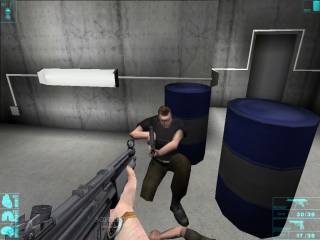
Enemy A.I. was heavily criticized. Bad guys alternate between taking cover (with some scripted sequences helping) and simply standing and trading shots. Bullets' damage, more than enemy persistence, will keep the player in cover. The terrorists from the film make appearances as bosses in the game, usually notable more by incredible resistance to the player's shots than any specific boss battle sequence. The exception to this is the final boss (Hans), whose fight recreates the ending of the film; using heavy scripting and requiring careful aim. Two bosses can also be killed using the environment, allowing the player to skip a lengthy fight if they can spot the alternative.
Presentation
Die Hard: Nakatomi Plaza runs on the LIthtech 2.5 engine. Textures are again taken from the film or pictures of realistic source materials. Locations from the film have been recreated frame-accurately, and extended or invented in the same style when needed. The story is told through frequent non-interactive, in-engine cutscenes, often stopping the player throughout the level. Little story is conveyed while the player is in direct control of McClane.
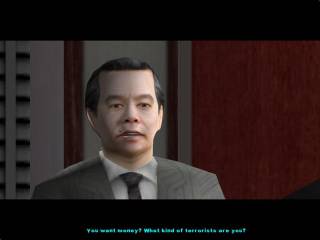
The only actor from the film to participate in the game is Reginald Vel Johnson as Sgt. Al Powell. Al will frequently guide the player over the radio as needed. McClane and Gruber are both voiced by sound-alikes, and mix speaking new lines for the game with recreating ones taken directly from the film. Also of note is that character likenesses are inconsistent. Al Powell, CEO Joseph Takagi, and a few of the terrorists do resemble the actors that played them in the film. Hans, John, and weaselly hostage Ellis do not.
Lines are also inconsistently censored. "No fuckin' shit lady, do I sound like I'm ordering a pizza?" is changed to "No kidding, lady!" However, the classic "Yippie ki yay" line is left untouched, along with additional punctuation in some lines. It is possible that, much like movies or television, the developers had a "limit" of how many instances of each word they could use, and so altered the ones they felt were least important.
No music from the film remains, and has been replaced with a similar-themed soundtrack (though with less of a "Christmas-y" feel than the film). Music is somewhat dynamic, and switches from subdued stealth to action beats as the player trades shots with foes.
Development
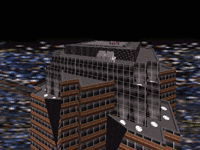
Die Hard: Nakatomi Plaza was conceived by Jason Holtslander, who assembled a group of die hard Die Hard fans to create a total conversion for Duke Nukem 3D. The team adopted the name "Creative Creations" and secured hosting at Dukeworld.com, calling the mod "Die Hard TC." Recreating the movie step for step was always the plan, and the team replaced Duke's drawn textures with bitmap graphics taken from scanned frames of the film and location photos. One of the final posts on their site recounted how the team had gone to Fox Plaza (the "real" Nakatomi Plaza in L.A.'s Century City) and posed as potential tenants looking to rent space. In reality, they used the free tour to snap detailed texture and reference photos, which they showed on the site, along with levels recreating some scenes from the film.
In 1999, the team switched to the GoldSrc engine used to power Half-Life. Aside from the benefits of a true 3D engine, the team also stated the engine's scripting abilities were clearly advantageous for trying to recreate action scenes from the film. The site was now hosted on HalfLife.net, and was renamed to "Nakatomi Plaza." More in-game level examples appeared over time, as well a detailed post describing the process of trying to recreate the warping effect of the non-standard lens used by film cinematographer Jan de Bont for the plane landing in the beginning of the film.
On February 20th, 1999, Russ Bullock joined the team as a lead programmer. Russ formed Piranha Games along with Jason Holtslander and art director Bryan Eckman. After E3 1999, the website abruptly went down and stayed that way. Followers of the project on Halflife.net speculated that the mod had been shut down, as similar Aliens and Predator mods based on Fox properties had been. Indeed, some stories say that Fox did send the team a cease and desist letter.
Either way, the three original founders legally incorporated Piranha Games Inc, and produced a series of demos in an attempt to get Fox to pick up the mod officially. Fox eventually approved, picking up the mod for development under Fox Interactive. The Piranha team grew substantially, the engine was changed again to licensee-friendly Lithtech, and announced around E3 2001, where an early version was available for play.
The final version was released April, 2002 as a $30 USD budget release. Copies of the game also included a limited-time voucher for a free VHS copy of the remastered special edition of Die Hard.
Reception
Unlike the earlier game including Nakatomi Plaza, Die Hard Trilogy, Nakatomi Plaza failed to please the majority of critics, both professional and general gamers. IGN noted that "There are some games you play because you love them and some games you play because it's your job. Die Hard is definitely one of the latter and I'm glad to be putting this review behind me." in it's 5.5/10 review. Most other critics shared the sentiment.

 PC
PC








